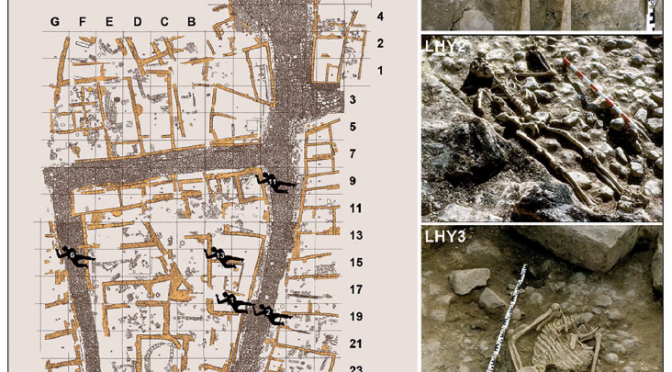For over 1000 years, the village of La Hoya grew and evolved, becoming a flourishing trade center. Then, suddenly, about 2200 years ago, it ceased to exist, completely obliterated. Thanks to the efforts of scientists from the University of Oxford, the National Center for Scientific Research in France, Arkikus, and the Alava Institute of Archeology in Vitoria-Gasteiz, in work published in the journal Antiquity, we now have a better understanding of what happened to the people of La Hoya, if not why.

- The site of La Hoya is located near Laguardia, Araba, some 40 kilometers south of the capital of Araba, Vitoria-Gasteiz. Laguardia has a rich history, with a wall ordered built by Sancho the Strong and several important churches. It was also the birthplace of Blanche of Nafarroa, one-time Queen of Castile. However, perhaps the most fascinating bit of history relates to the Iron Age site of La Hoya.
- First discovered in 1935, it wasn’t until the 1970s that excavations began in La Hoya. The village existed over three distinct ages: the Middle/Late Bronze Age, when the buildings were built of wood; the Early and Middle Iron Ages, when new mixes of stone, wood and adobe were used in construction; and the Late Iron Age, which saw the introduction of Celtiberian elements and the paving of streets. The people who lived in La Hoya were probably Berones, a Celtic people.
- La Hoya sat in the valley of the Ebro River, making it a key spot for the flow of people and goods. At its peak, it had numerous shops, communal spaces, and a population of about 1500 people. It seemed to have facilities for pottery and metal production while cremation remains suggest it was ruled by a “warrior aristocracy.” However, it was situated in the low valley, with only its wall to protect it.
- Some time around 200-300 BCE, the village was destroyed. At least thirteen bodies have been discovered and studied, ranging from both men and women as well as children and even an infant. It seems that their bodies were left where they fell, with no funerary rituals or burials. Their bones are charred, suggesting that, after they were killed, the village was burned to the ground.
- The remains reveal a violent end to the lives of these people. At least one man was decapitated, his head missing from the remains. One man and one teenage girl had their right arms amputated — the girl’s arm was found with bracelets still adorning it. No weapons were found, suggesting that the populace was either defenseless or the attack was a surprise. Most items of potential value were left untouched, suggesting that plunder was not the motivation. This massacre effectively ended La Hoya as a human settlement.
- This new understanding of the fate of La Hoya rewrites some previous assumptions. In particular, this massacre occurred before Roman contact. It had been thought that large-scale warfare came to the Iberian peninsula with the Romans, but this site reveals that it existed before.
Primary sources: Euskonews; T. Fernández-Crespo, J. Ordoño, A. Llanos, R. J. Schulting, “Make a desert and call it peace: massacre at the Iberian Iron Age village of La Hoya,” Antiquity 94, 1245 (2020).
Discover more from Buber's Basque Page
Subscribe to get the latest posts sent to your email.



Just fascinating. So interesting and so well explained. Thank you once more Buber. Another top job. Congratulations and, above all, eskerrik asko. Aurrera beti.